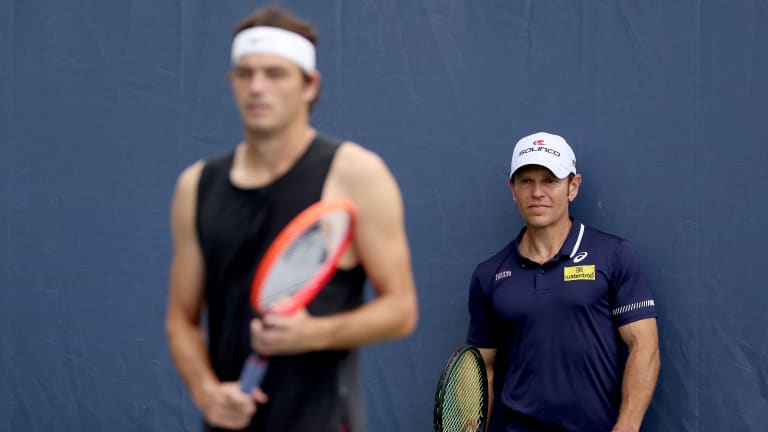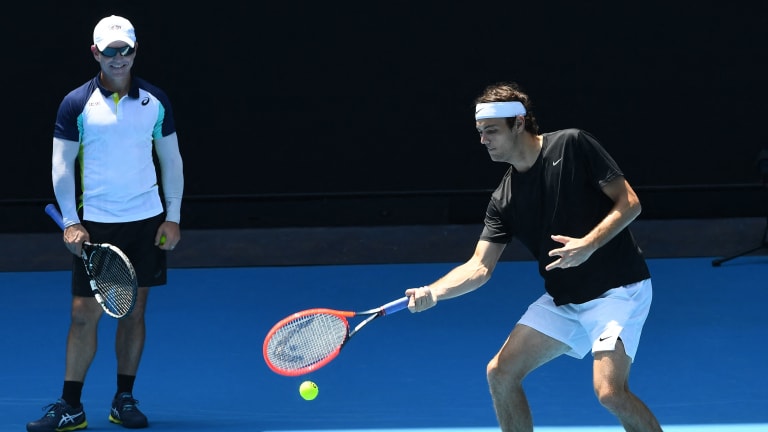Tennis.com Interview
Holding Court with... Michael Russell, coach of Taylor Fritz with an unbreakable poker face
By Feb 26, 2024Tennis.com Interview
Nick Kyrgios brings the show, and new perspective, to Madison Square Garden
By Dec 08, 2025Tennis.com Interview
After longest off-season ever, Tommy Paul talks injury comeback, wedding plans at MSG
By Dec 08, 2025Tennis.com Interview
Following in family footsteps, Elli Mandlik clinches Australian Open return in wild card play-off
By Nov 25, 2025Tennis.com Interview
Ben Johnson 101: How an Instagram auteur is defining modern tennis lifestyle
By Nov 11, 2025Tennis.com Interview
Patrick Kypson, former college teammate of Rinderknech and Vacherot, is writing his own perseverance story
By Oct 28, 2025Tennis.com Interview
Michael Zheng channels Ivy League balancing act into rapidly blossoming pro tennis future
By Oct 21, 2025Tennis.com Interview
Flavio Cobolli wants to earn Davis Cup Finals nomination—and stay on as ATP's 'admin'
By Oct 16, 2025Tennis.com Interview
With IMG Academy backing, Wakana Sonobe kicks off pro career at home in Osaka
By Oct 16, 2025Tennis.com Interview
Alex Michelsen wins Almaty debut to end losing skid, reveals coaching trial with Kristof Vliegen
By Oct 15, 2025Holding Court with... Michael Russell, coach of Taylor Fritz with an unbreakable poker face
“I literally have no expression”: Talking to the 45-year-old former player about life and work on the road with the top-ranked American man.
Published Feb 26, 2024
Advertising

Fritz has reached a different major quarterfinal in each of his seasons working with Russell (2022 Wimbledon, 2023 US Open, 2024 Australian Open).
© Getty Images
Advertising
Advertising

Under Russell's guidance, Fritz has firmly held onto the title as the ATP's No. 1-ranked American.
© AFP via Getty Images